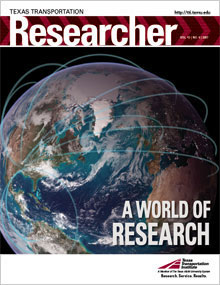For years, the Texas Transportation Institute (TTI) has conducted groundbreaking research in the area of pavement markings and retroreflectivity. Now TTI is taking its expertise nationwide in a pavement marking demonstration project in Alaska and Tennessee.
The project, sponsored by the United States Department of Transportation, is studying the safety impacts, environmental impacts and cost-effectiveness of different pavement marking systems. TTI Research Engineer and Division Head of the Operations and Design Division Paul Carlson heads the massive project that also receives assistance from several agencies.
“There are several issues that this project is attempting to tie together,” explains Carl Andersen, roadway team leader for the Federal Highway Administration. “One is studying the benefit of using wider-than-normal edgelines on two-lane rural roads, and another is the durability of pavement marking systems. We hope the research findings offer the potential for significant cost savings for states.”
In order to assess the cost-effectiveness of different pavement marking systems, the team installed longitudinal and transverse pavement marking test decks in Alaska and Tennessee. “Anchorage, Alaska, where we installed one of our test decks, probably has the toughest pavement marking conditions in the U.S.,” says Carlson. “The Alaska Department of Transportation and Public Facilities responsible for the Anchorage jurisdiction has a bare pavement policy in the winter, so they plow more than you would expect, especially during heavy snowfall like they had last winter. Alaska also allows studded tires, and they use very abrasive material and de-icing agents on the roadway. So in reality, it becomes one of the more harsh environments for pavement markings, which is ideal for a durability study.”
With the assistance of the Tennessee Department of Transportation, the research team is studying the benefits of wider-than-normal edgelines on curves on rural two-lane highways. Last summer a team of researchers collected data for two months on vehicles negotiating those curves with four-inch edgelines. Next summer the Tennessee Department of Transportation will re-stripe the same curves with 6-inch edgelines, and the research team will repeat the data collection process and compare the results.
“In this part of the study, we are looking at operational surrogates for safety such as braking, lane placement and deceleration, which are all characteristics of vehicles negotiating two-lane horizontal curves,” says Carlson. “We want to know if wider edgelines change the way drivers negotiate rural two-lane horizontal curves, which are over-represented in national crash statistics.”
A third part of the project involves a retrospective crash study to determine if wider lines are safer. The research team surveyed all the states to find out if they used wider edgelines. If they did, researchers wanted to know where and when they were applied. For those states that can provide these data, the team is getting the before-and-after crash data to conduct a national analysis to determine if there are safety benefits to wider edgelines.
While Andersen admits that the scope and geographic locations of the project present challenges, he is also quick to point out the rewards.
“We have had great cooperation from the states and industry partners that have helped move this project forward. We also have an outstanding research team,” says Andersen. “It has been challenging, but gratifying.”
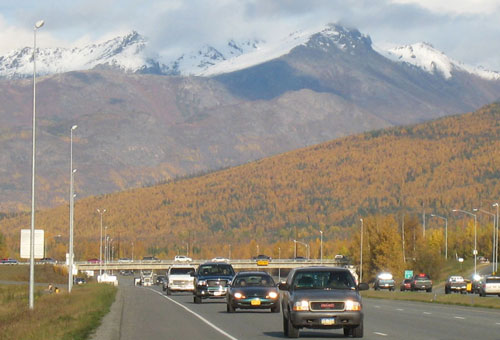
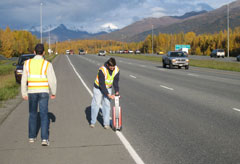
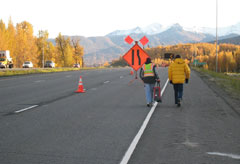
(Above) The harsh environment of Alaska proved an ideal location for testing the durability of various types of pavement markings.
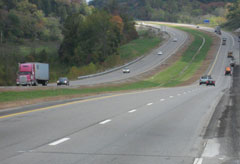
Researchers collected data on how vehicles negotiated curves with varying widths of edgelines.

A researcher measures an edgeline on a test deck in Tennessee.
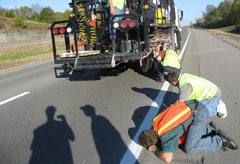
An edgeline is restriped on the Tennessee test deck.
